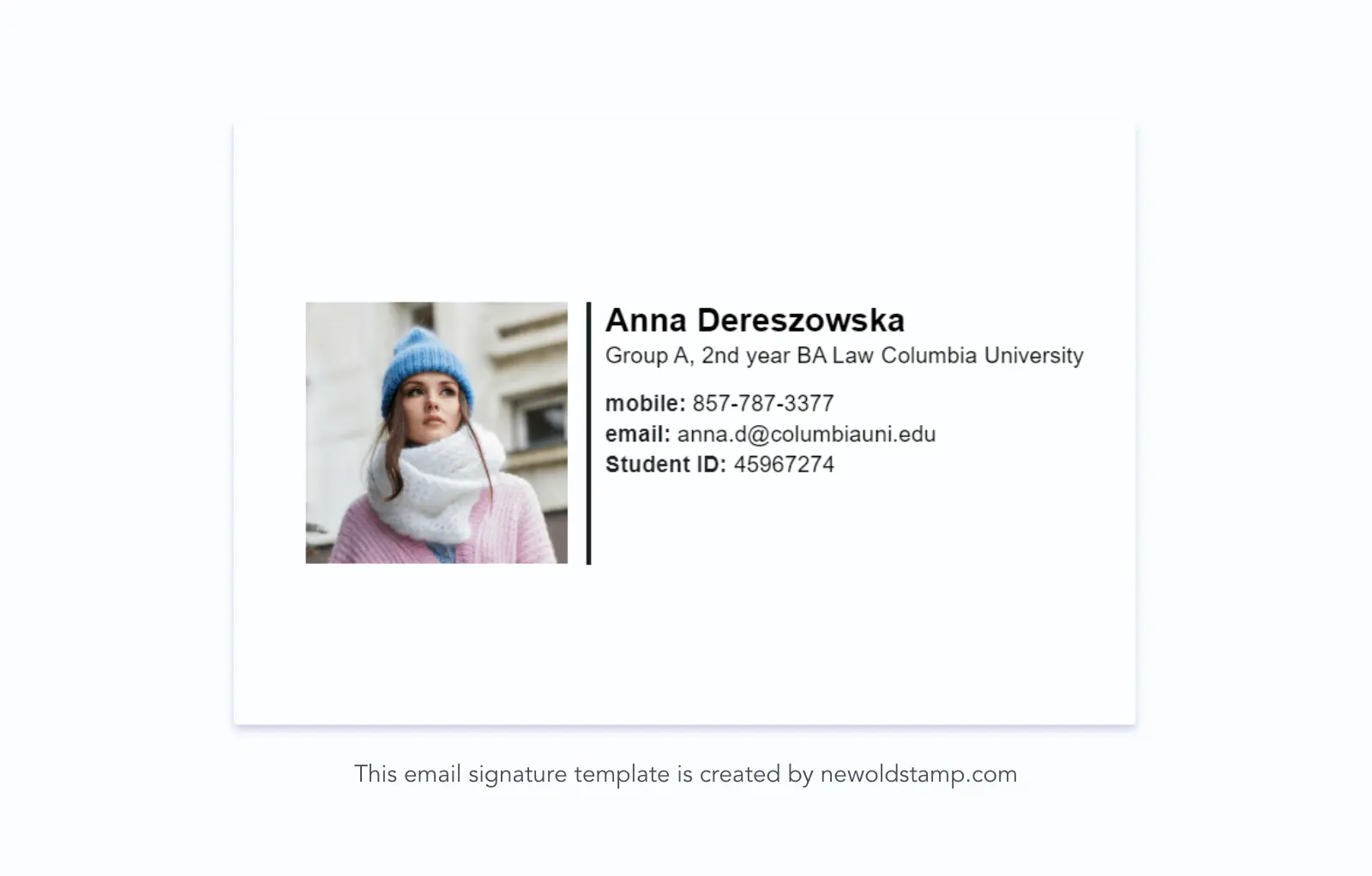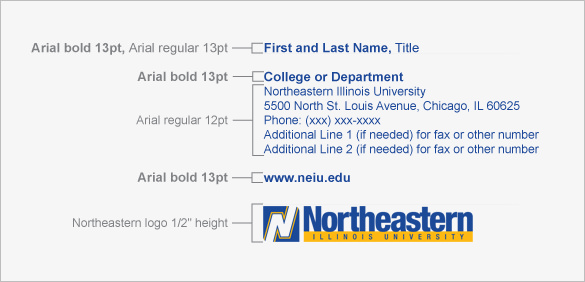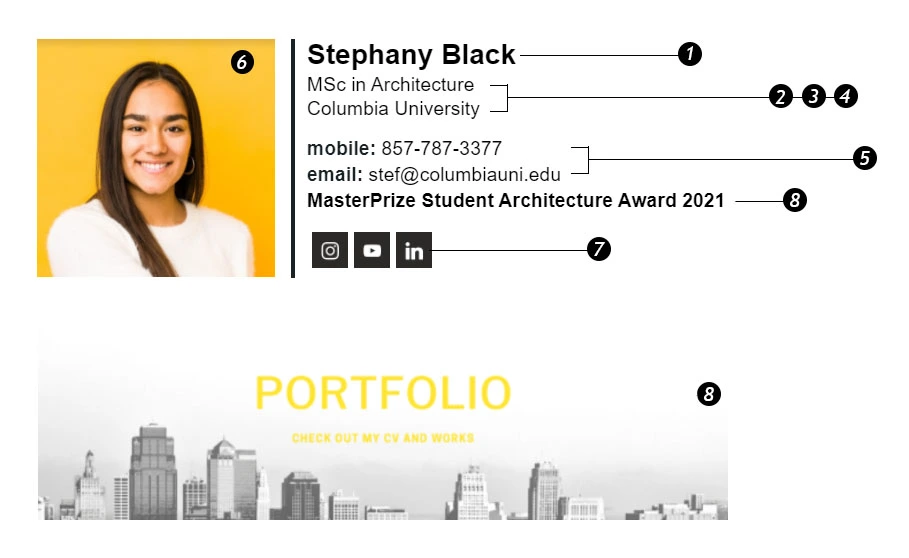

Your title indicates your current status or role.
#Email signature examples for just college graduate professional#
(Optional) A professional picture, logo, and/or crest.(Optional) Links to your LinkedIn page, portfolio, or other relevant sites.Your higher education institution and/or department.With that in mind, here are the elements you should include in a professional student email signature, regardless of whether you're currently at the undergraduate, master's, or Ph.D. If you do find any best practices for your institution, it's best to follow them, especially if you're a graduate student. A quick Google search can work wonders, especially if you're looking for a specific example. Then, take a look at our recommended templates to get started.Īs an additional note, it's a good idea to check if your college or university has any specific guidelines for creating email signatures. After that, scroll down to see example undergraduate and graduate student email signatures. Thankfully, the process is actually quite simple. However, most find themselves at a loss when, for instance, creating a college student email signature. Many people can guess at what to include in a standard business signature. What should I include in a proper email signature? If you're concerned about a particularly important document, they're always ready to help. Having a default email signature saves time and ensures that you avoid any embarrassing typos that might slip into the bottom of your email.Īt Scribendi, our professional editors are very familiar with the common mistakes that crop up when writers are under stress. When you're stressed (and who isn't when they're applying for a massive grant or high-stakes job?), it's easy to make mistakes. A default signature helps avoid cringe-worthy typos Use it to conclude your messages in a professional manner that is conducive to building your professional relationships with others. In the digital world, your signature performs the same function as, for example, concluding an introduction with a warm smile and firm handshake. Therefore, it's important to ensure that your otherwise professional email doesn't end on an overly casual note. Your signature is the last thing that a reader will see.

A professional email signature creates a good impression Understandably, these qualities can give you a competitive edge when applying to jobs, grants, or even postdoctoral programs.

(Although there are titles like "BA (FH)" (FH meanging Fachhochschule, "university of applied sciences"), which appear sometimes.

However, I have never ever seen someone stating the field they received their titles in. So in short, do what your environment does. While many people on this site view many titles as "bragging", not including them can certainly interpreted as an insult to the others - like you are saying "you guys including so many titles are pretentious". (But then again, I am not sure if the commenters suggesting writing "Bob" are serious or joking.) "Bob" in a signature would certainly be viewed as unprofessional and strange. In my view, many people here see a signature (if there is any) as a place where you state your "official" name - and, at least here, this includes your titles. I often see multiple doctor titles and honoris causa titles in signatures. Here in Austria, it seems to be common practise to list all your titles (maybe except for BSc/BA if you have a MSc/MA because people are not so used to these two titles). what your collegues or other comparable people do). Do what is common practise in your institution/region (i.


 0 kommentar(er)
0 kommentar(er)
